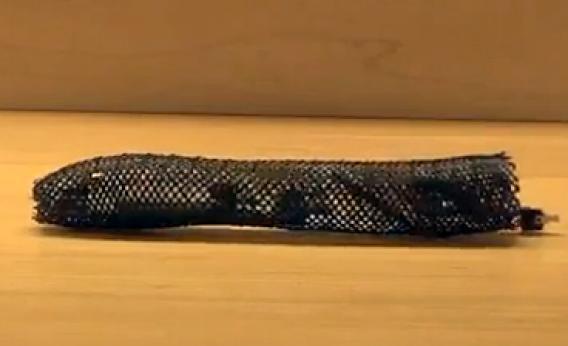Earlier this year, DARPA gave us Cheetah, a four-legged robot that broke the robot land speed record by hitting 18 mph on a treadmill. Now comes a DARPA-funded machine that proudly embraces the opposite end of the robot swiftness spectrum.
Meet Meshworm, an earthworm-like robot that contracts segments of its body one after the next to inch along the ground at up to 5 millimeters per second, or about 0.01 mph. That is, literally, a snail’s pace.
But Meshworm, designed by an MIT-led international research team, has other virtues. With a flexible mesh tube for a body, it’s lightweight, durable, and can contort itself to squeeze through tight spaces. In the video below, the researchers smash it with a hammer and stomp on it. Meshworm doesn’t care—it keeps inching along regardless.
In fact, simple as it appears, the worm represents a breakthrough in the emerging field of soft robotics. One of the reasons robots struggle in a human environment is that they’re rigid, which makes them at once too powerful and too brittle for tasks that come easily to animals, like descending a staircase or gripping a glass of water. Soft robots are more like organic creatures, making them a much better fit for, say, medical applications.
Meshworm, for instance, could serve as a model for future robotic endoscopes, worming their way into people’s gastrointestinal tracts. Past soft robots have relied on air pumps to move, but those are bulky and hard to integrate into a small and flexible design, mechanical engineering professor Sangbae Kim explained in an MIT news release. Meshworm relies instead on an “artificial muscle” of coiled nickel titanium, which stretches and contracts in response to heat.
While the potential medical applications are exciting, it’s a little creepier to imagine what DARPA might have in mind for this type of machine. A paper published in the journal IEEE/ASME Transactions on Mechanics makes a cryptic reference to “reconnaissance.”
